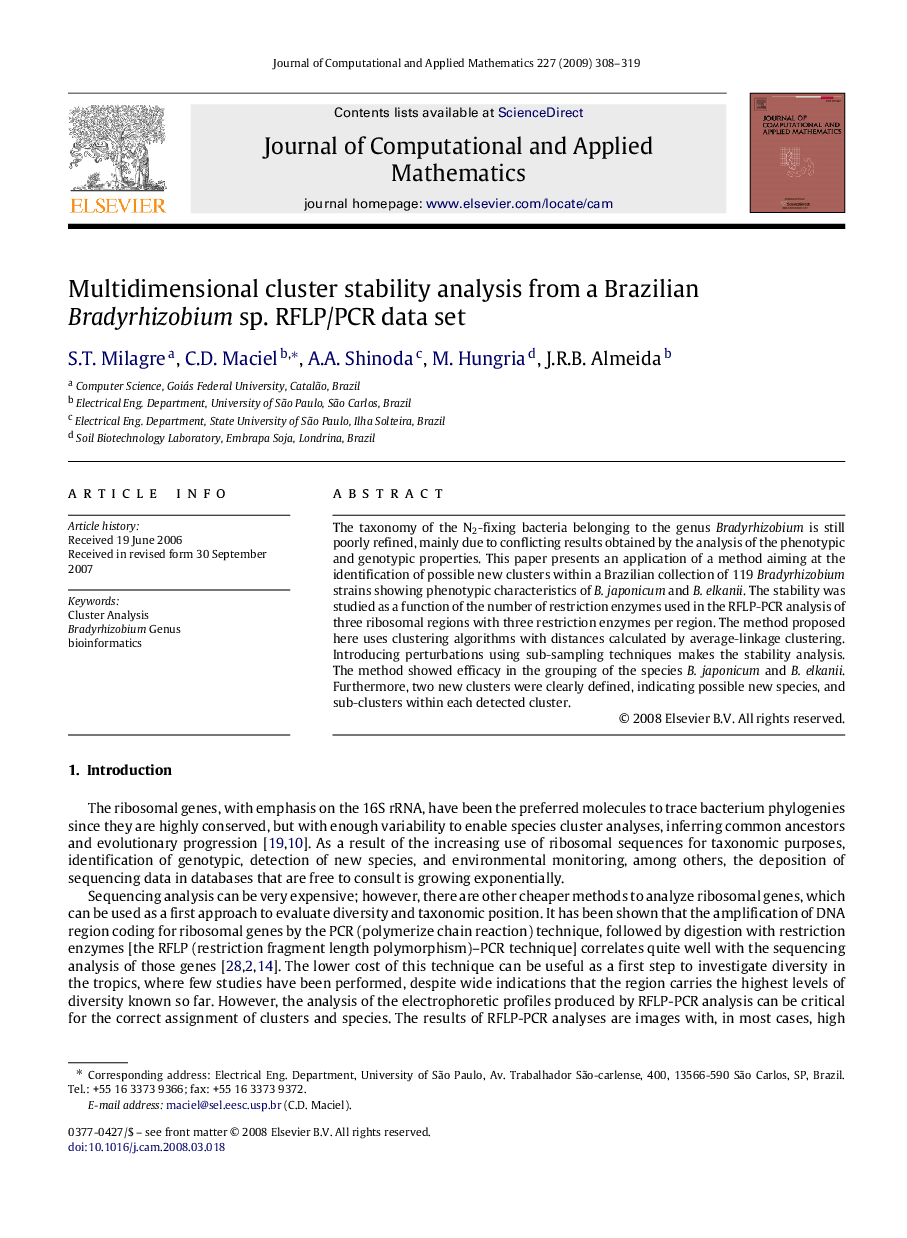| Article ID | Journal | Published Year | Pages | File Type |
|---|---|---|---|---|
| 4641308 | Journal of Computational and Applied Mathematics | 2009 | 12 Pages |
The taxonomy of the N2-fixing bacteria belonging to the genus Bradyrhizobium is still poorly refined, mainly due to conflicting results obtained by the analysis of the phenotypic and genotypic properties. This paper presents an application of a method aiming at the identification of possible new clusters within a Brazilian collection of 119 Bradyrhizobium strains showing phenotypic characteristics of B. japonicum and B. elkanii. The stability was studied as a function of the number of restriction enzymes used in the RFLP-PCR analysis of three ribosomal regions with three restriction enzymes per region. The method proposed here uses clustering algorithms with distances calculated by average-linkage clustering. Introducing perturbations using sub-sampling techniques makes the stability analysis. The method showed efficacy in the grouping of the species B. japonicum and B. elkanii. Furthermore, two new clusters were clearly defined, indicating possible new species, and sub-clusters within each detected cluster.
